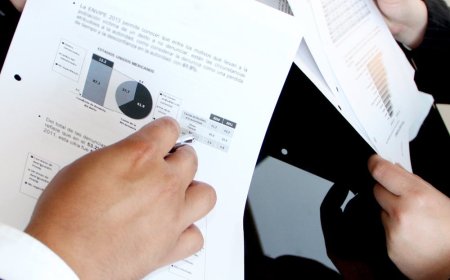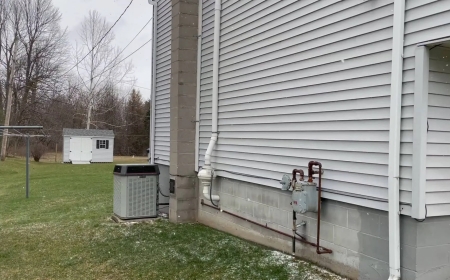How To Find Enchiladas Rojas Dallas Stacked
How to Find Enchiladas Rojas Dallas Stacked Enchiladas rojas Dallas stacked is more than just a regional dish—it’s a culinary experience rooted in Tex-Mex tradition, layered with history, flavor, and local pride. For food enthusiasts, travelers, and home cooks alike, discovering the best version of this dish in Dallas means navigating a landscape of family-run taquerías, modern fusion restaurants,
How to Find Enchiladas Rojas Dallas Stacked
Enchiladas rojas Dallas stacked is more than just a regional dish—it’s a culinary experience rooted in Tex-Mex tradition, layered with history, flavor, and local pride. For food enthusiasts, travelers, and home cooks alike, discovering the best version of this dish in Dallas means navigating a landscape of family-run taquerías, modern fusion restaurants, and hidden gems tucked into neighborhood corners. But what exactly are enchiladas rojas Dallas stacked, and why does finding the right one matter? This guide offers a comprehensive, step-by-step approach to locating, evaluating, and savoring the most authentic and exceptional stacked enchiladas rojas in Dallas, Texas. Whether you're a first-time visitor or a long-time resident looking to expand your palate, this tutorial equips you with the knowledge, tools, and strategies to uncover the city’s most celebrated versions of this beloved dish.
Step-by-Step Guide
Understand What Enchiladas Rojas Dallas Stacked Actually Are
Before you begin your search, it’s essential to know what you’re looking for. Enchiladas rojas Dallas stacked refers to a variation of the classic Mexican enchilada, adapted over decades in Dallas to suit local tastes. Unlike traditional enchiladas that are typically served flat in a single layer, “stacked” implies multiple layers—often three or more—of corn tortillas, each dipped in a rich, spicy red chile sauce (roja), filled with shredded chicken or beef, covered in melted cheese, and sometimes topped with crema, onions, or beans. The “Dallas” distinction often implies a slightly heavier hand with cheese, a touch of cumin in the sauce, and occasionally a side of refried beans or Mexican rice. Some establishments even add a layer of shredded lettuce or diced tomatoes for texture.
The term “stacked” is key. If a restaurant serves a single layer of enchiladas with sauce poured over the top, it’s not truly “stacked.” Look for dishes described as “layered,” “multi-tiered,” or “stacked enchiladas” on menus. The visual presentation should resemble a casserole or lasagna, with distinct layers visible when cut.
Identify Reliable Sources for Local Food Recommendations
Start your search by consulting trusted local food authorities. Dallas has a vibrant food scene with numerous bloggers, podcasts, and influencers who specialize in Tex-Mex cuisine. Look for publications like Dallas Observer, Eater Dallas, and Local Diner, which regularly publish “Best Of” lists and deep-dive reviews. Podcasts such as “The Dallas Food Show” often feature interviews with chefs who prepare stacked enchiladas rojas, offering insider tips on where to go.
Additionally, community forums like Reddit’s r/Dallas and Facebook groups such as “Dallas Food Lovers” are goldmines for real-time, unfiltered recommendations. Locals often post photos, timestamps, and even driving directions to their favorite spots. Be wary of generic “top 10” lists that include chain restaurants—focus on establishments that are independently owned and have been operating for over a decade.
Use Google Maps and Advanced Search Filters
Google Maps is one of the most powerful tools for local discovery. Begin by searching “stacked enchiladas rojas Dallas” directly in the search bar. Then, refine your results using filters:
- Set the “Open Now” toggle to ensure you’re only seeing currently operating locations.
- Sort by “Highest Rated” to prioritize restaurants with 4.5 stars or above.
- Click on “Photos” to see if the menu item appears visually stacked—look for layered tortillas, melted cheese draping over edges, and red sauce pooling beneath.
- Read recent reviews (within the last 3–6 months) to ensure consistency in quality.
Use advanced search operators to narrow results. For example, type: “stacked enchiladas rojas” site:dallasobserver.com to find only articles from Dallas Observer. Or search: “enchiladas rojas stacked” + “Dallas” + “best” -chain to exclude national chains.
Visit Neighborhoods Known for Authentic Tex-Mex
Not all areas of Dallas offer the same quality of stacked enchiladas rojas. Focus your search on neighborhoods with deep cultural roots in Mexican and Tex-Mex cuisine:
- East Dallas – Home to long-standing family taquerías like El Fenix (established 1918) and La Salsa.
- Oak Cliff – A culinary hotspot with spots like Mi Tierra and Casa de Tamales.
- Deep Ellum – Known for fusion takes, but some spots like The Grape offer traditional stacked versions.
- Garland and Rowlett – Often overlooked, but these suburbs have hidden gems with recipes passed down for generations.
Drive or walk through these neighborhoods and look for establishments with handwritten signs in Spanish, outdoor seating with red-checkered tablecloths, and signs advertising “hecho en casa” (homemade). These are strong indicators of authenticity.
Check Menu Language and Ingredient Transparency
Authentic stacked enchiladas rojas rely on specific ingredients and preparation methods. When reviewing a restaurant’s menu, look for these key indicators:
- Red sauce made from dried chiles – Look for mentions of ancho, guajillo, or pasilla chiles. Avoid menus that list “red sauce” or “chili sauce” without specifying ingredients.
- Hand-pressed corn tortillas – Flour tortillas are not traditional for enchiladas rojas. Corn tortillas are essential.
- Shredded chicken or beef, not ground meat – Authentic versions use slow-cooked, shredded protein.
- Queso fresco or Monterey Jack, not processed cheese – The cheese should melt but retain texture.
Restaurants that list the origin of their chiles (“hand-roasted guajillo from Puebla”) or the source of their tortillas (“made daily from blue corn”) are more likely to prioritize quality. Avoid places that use pre-made sauce packets or frozen tortillas.
Call Ahead and Ask Specific Questions
Don’t rely solely on online information. Call the restaurant and ask direct, informed questions:
- “Do you make your red sauce from dried chiles, or is it from a jar?”
- “Are your enchiladas stacked with three layers of tortillas?”
- “Is the chicken slow-cooked and shredded by hand?”
- “Can I see a photo of your stacked enchiladas rojas?”
A knowledgeable staff member will answer with confidence and detail. If they hesitate, say “we just heat it up,” or confuse it with a burrito, move on. The best places take pride in their process and will gladly describe it.
Visit During Peak Hours for Authentic Service
Timing matters. Visit restaurants during lunchtime on a weekday—this is when locals eat, and kitchens are operating at peak efficiency. Avoid weekends if possible; lines are long, and kitchens may rush orders to keep up with demand. A well-made stacked enchilada rojas requires time: the tortillas must be dipped in sauce just right, the filling seasoned evenly, and the layers baked to meld without becoming soggy.
Also, ask for the “chef’s special” or “house favorite.” Many places don’t list their best version on the main menu—it’s reserved for regulars. A simple question like, “What’s the one you make for your family?” often yields the most authentic answer.
Document and Compare Your Findings
Keep a personal log as you sample different versions. Record:
- Restaurant name and address
- Price and portion size
- Texture of tortillas (crisp? tender? soggy?)
- Flavor profile of sauce (smoky? bright? overly spicy?)
- Quality of cheese (melty? greasy? bland?)
- Overall balance of ingredients
- Photo of the dish
After visiting five to seven locations, you’ll begin to notice patterns. The best versions will consistently feature a complex sauce, tender tortillas, and a harmonious blend of flavors without overpowering heat. Use this data to rank your favorites and identify the top contenders.
Best Practices
Prioritize Longevity Over Popularity
A restaurant that has been serving stacked enchiladas rojas for 20+ years is far more likely to have perfected the recipe than a trendy new spot with viral Instagram posts. Look for establishments with decades of history. Family-run businesses often pass down recipes through generations, preserving traditional techniques that mass-market chains cannot replicate.
Look for Consistency in Reviews
One glowing review means little. Look for consistent feedback across multiple platforms over time. If a place has 50 reviews over two years and 48 mention the stacked enchiladas as “the best in Dallas,” that’s a strong signal. Conversely, if reviews are mixed or only recent, the quality may be inconsistent.
Respect Cultural Context
Enchiladas rojas are not just food—they’re cultural artifacts. Avoid restaurants that market them as “Mexican-inspired fusion” unless they clearly honor traditional preparation. Authentic versions are rarely garnished with cilantro or lime wedges (common in Americanized versions), and they rarely come with sour cream. Crema is the traditional topping. Understanding these nuances helps you distinguish true craftsmanship from cultural appropriation.
Support Small, Independent Businesses
Large chains may offer convenience, but they rarely offer authenticity. Independent restaurants in Dallas often source ingredients locally, employ local chefs, and reinvest profits into the community. Choosing them supports cultural preservation and economic sustainability.
Visit in Person When Possible
While online research is invaluable, nothing replaces the sensory experience of tasting the dish in person. The aroma of roasting chiles, the sizzle of cheese melting on a hot plate, the texture of a perfectly dipped tortilla—these elements cannot be captured in a photo or review. Make it a point to dine in, even if it means waiting in line.
Ask About the Chef’s Background
Many of the best stacked enchiladas rojas in Dallas are prepared by chefs who grew up in Mexico or whose families emigrated from states like Puebla, Oaxaca, or Jalisco. Ask where the chef is from. If they mention a specific region and describe childhood memories tied to the dish, you’re likely in the presence of true expertise.
Be Patient and Open-Minded
Not every restaurant will have the “perfect” version. Some may have excellent sauce but weak cheese. Others may have perfect texture but lack depth in flavor. The goal isn’t to find one flawless dish, but to understand the spectrum of what exists. Each variation teaches you something about the cuisine.
Tools and Resources
Online Directories and Food Apps
- Yelp – Use filters for “Mexican,” “Tex-Mex,” and “Stacked Enchiladas” to narrow results. Sort by “Most Reviewed.”
- Google Maps – Use the “Photos” tab to verify visual authenticity. Check the “Questions & Answers” section for real customer insights.
- TripAdvisor – Look for travel reviews from out-of-town visitors who specifically sought out authentic Tex-Mex.
- Zomato – Offers detailed menus and user-submitted photos that often include close-ups of layered enchiladas.
- Foursquare – Known for accurate, real-time location data and local tips from power users.
Local Food Blogs and Podcasts
- Dallas Foodie – Weekly posts featuring hidden gems and chef interviews.
- Tex-Mex Chronicles – A blog dedicated to the history and evolution of Tex-Mex in North Texas.
- The Dallas Food Show (Podcast) – Episodes on “The Art of the Stacked Enchilada” and “Chile Varieties in Dallas Kitchens.”
- Local Eats Dallas – A YouTube channel with video tours of kitchens and cooking demonstrations.
Books and Documentaries
- “Tex-Mex: A History” by Gilberto M. Hinojosa – Provides cultural context for how Tex-Mex cuisine evolved in Dallas and beyond.
- “The Enchilada: A Global History” by María de los Ángeles Cárdenas – Traces the dish’s roots from ancient Mesoamerica to modern Dallas.
- “Dallas Eats: A Culinary Journey” (Documentary, 2021) – Features a segment on stacked enchiladas rojas at three iconic Dallas restaurants.
Community Organizations
- Dallas Mexican American Historical League (DMAHL) – Offers cultural tours and food walks that include stops at traditional restaurants.
- Latino Foodways of Texas – A nonprofit that documents and preserves regional recipes; they maintain a database of authentic Tex-Mex dishes in North Texas.
- Local Farmers Markets – Many vendors sell homemade red chile sauce and corn tortillas. Ask them where they source their recipes—they often know the best restaurants.
Technology for Research
- Google Alerts – Set up alerts for “stacked enchiladas rojas Dallas” to receive notifications when new articles or reviews are published.
- AnswerThePublic – Enter “where to find stacked enchiladas rojas in Dallas” to see real search queries people are making.
- Semrush or Ahrefs – Use keyword research tools to find which restaurants rank highest for “best stacked enchiladas rojas Dallas.”
Real Examples
Example 1: El Fenix – Downtown Dallas
Established in 1918, El Fenix is one of the oldest continuously operating Mexican restaurants in the U.S. Their stacked enchiladas rojas are a signature dish. The sauce is made from a blend of ancho and guajillo chiles, roasted in-house and simmered for four hours. Tortillas are pressed daily from nixtamalized corn. Three layers are stacked, filled with shredded chicken, covered in Monterey Jack, and baked until golden. Served with a side of black beans and a dollop of crema. Locals say it’s “the taste of Dallas childhood.”
Example 2: Casa de Tamales – Oak Cliff
This family-owned spot in Oak Cliff doesn’t even list stacked enchiladas rojas on its menu. You have to ask. The owner, Maria Lopez, learned the recipe from her grandmother in Guanajuato. Her version uses pasilla chiles for a deeper, earthier flavor. The tortillas are slightly charred for added smokiness. Cheese is layered between each tortilla, not just on top. Served with pickled red onions and a side of warm cornbread. One reviewer wrote: “It’s not just food—it’s a memory.”
Example 3: Mi Tierra Café y Panadería – South Dallas
Known for its 24-hour service and festive atmosphere, Mi Tierra offers a version that leans slightly toward Tex-Mex indulgence. Their stacked enchiladas include a layer of refried beans beneath the tortillas, making them heartier. The sauce is slightly sweeter, with a hint of cinnamon—a nod to their bakery roots. Cheese is a blend of cheddar and queso blanco. It’s not the most traditional, but it’s beloved for its comfort-food appeal.
Example 4: La Salsa – East Dallas
A hidden gem in a strip mall, La Salsa uses a secret family recipe passed down since 1967. Their sauce is made with dried chiles soaked overnight, then blended with garlic, cumin, and a touch of dark chocolate (a technique borrowed from Oaxacan mole). The tortillas are dipped in warm oil before being layered, giving them a slight crispness. The dish is finished with a drizzle of avocado crema and a sprinkle of epazote. Only 10 servings are made daily—call ahead.
Example 5: The Grape – Deep Ellum
A modern twist on tradition. The Grape’s chef, a Dallas native with Mexican heritage, uses heirloom blue corn tortillas and a red chile sauce infused with smoked paprika. The layers include caramelized onions and a hint of orange zest for brightness. Served with a side of pickled jalapeños and a microgreens salad. While not traditional, it’s a creative homage that respects the roots of the dish.
FAQs
What makes enchiladas rojas “stacked”?
“Stacked” means the enchiladas are layered vertically—typically three or more tortillas, each dipped in sauce and filled with protein and cheese, then baked together. This creates a casserole-like structure, unlike traditional single-layer enchiladas.
Are flour tortillas ever used in stacked enchiladas rojas?
Authentic versions use corn tortillas. Flour tortillas are softer and more common in northern Mexican or Tex-Mex fusion dishes, but they’re not traditional for enchiladas rojas in Dallas.
Can I order stacked enchiladas rojas online for delivery?
Yes, many restaurants offer delivery via Uber Eats, DoorDash, or Grubhub. However, delivery can compromise texture—tortillas may become soggy. For best results, pick up in person.
Is the sauce always spicy?
No. The heat level varies by restaurant. Some use mild chiles for balance, while others add serrano peppers for kick. Ask for “mild,” “medium,” or “hot” when ordering.
Do I need to make a reservation?
Most casual spots don’t take reservations. For popular locations like El Fenix or La Salsa, arriving early (before 11:30 a.m.) is recommended to avoid long waits.
What should I pair with stacked enchiladas rojas?
Traditional sides include refried beans, Mexican rice, and a simple green salad. A cold horchata or a light lager complements the richness of the dish.
Can I make stacked enchiladas rojas at home?
Absolutely. Start with a simple recipe using dried ancho and guajillo chiles, corn tortillas, shredded chicken, and Monterey Jack. Bake at 350°F for 20–25 minutes until bubbly. Many online tutorials from Dallas chefs offer authentic methods.
Why is this dish so popular in Dallas?
Dallas has one of the largest Mexican-American populations in the U.S., and Tex-Mex cuisine evolved here as a fusion of Mexican traditions and American ingredients. Stacked enchiladas rojas represent that blend—comforting, hearty, and deeply rooted in community.
Are there vegetarian or vegan versions?
Yes. Some restaurants offer versions with black beans, roasted vegetables, or jackfruit instead of meat. Vegan versions use cashew-based cheese and omit dairy. Always confirm ingredients when ordering.
How do I know if a restaurant is truly authentic?
Look for Spanish signage, family ownership, handmade tortillas, and sauce made from dried chiles. Authentic spots rarely have English-only menus or use pre-packaged sauces.
Conclusion
Finding the best stacked enchiladas rojas in Dallas is not merely a quest for a meal—it’s an exploration of culture, history, and community. Each layer of tortilla, each simmered chile, each dollop of crema tells a story of migration, adaptation, and resilience. By following the steps outlined in this guide—from researching reputable sources to visiting neighborhoods with deep culinary roots—you equip yourself not just to find the dish, but to understand its significance.
The most memorable versions are not always the most advertised. They’re often found in quiet corners, behind unassuming doors, prepared by hands that have been making this dish for decades. Use the tools, respect the traditions, ask the questions, and most importantly—taste with intention.
As you sample your way through Dallas’s stacked enchiladas rojas, you’re not just eating—you’re participating in a living culinary tradition. And when you finally find that perfect bite—where the sauce clings just right to the tortilla, the cheese melts into creamy perfection, and the spices bloom on your tongue—you’ll understand why this dish is more than food. It’s a legacy.




































